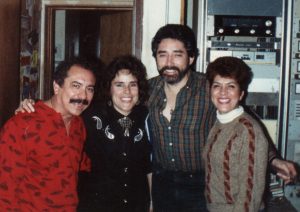I danced competitive salsa in South Korea—now that’s a phrase you don’t hear often. I had just finished my master’s degree and wasn’t ready for the real world yet. With no teaching experience and no TEFL (teaching English as a foreign language) certification, I stumbled across one of the few countries that offered reasonable pay and free housing for just about any native English speaker with at least a bachelor’s degree. I was assigned to Seoul and given a brand new condo in Gangnam District, the Wall Street of Seoul. The flat was above a 7-11 and a brothel, with young girls in tight glittery dresses accompanied by balding business men in the elevators at all hours of the day. I quickly learned that such couplings were the norm in Seoul where brothels were as common as fast food joints.
I didn’t fit in at the school, at least not with most of the foreign teachers. They were largely younger than me and came to Korea for endless drinking and hooking up. My drinking days—at least that kind of drinking—was left in my undergrad years at the insistence of my liver. The Korean co-teachers I befriended had husbands and young children, so our “outside of work friendships” were limited to the occasional shopping trips and them teaching me how to make traditional kimchi in bathtubs.
I found salsa dancing because, quite honestly, it was the only possible outlet where I could meet people without there being a requirement of getting stupid drunk in the process. The salsa studio I found was in Itaewon, the district where the US Army Base was nestled, which meant the streets were crawling with Americans. The studio was expansive, owned by an American man and his Korean wife. He’d began his dancing career teaching at Arthur Murray studios (just like Johnny in Dirty Dancing!), and had met his wife when he came to Korea years ago to teach. Even in his thirties, his face was deeply scarred with old acne marks, but when he danced with you he was the most beautiful man I’d ever seen.
His wife was that kind of unrestrained wild that debunked any lingering stereotypes of what a southeast Asian woman was. She was loud, demanding, and laughed just as much as she talked. “Me, I don’t do this whole proper Korean dancing girl thing,” she said during my first class. It was a beginner one, even though I’d had years of experience in jazz and tap. “I dance like a Latin girl, and that’s what I’m going to teach you.” And she did, putting the bulk of her moves into her hips and flicks of her wrists instead of the more prim approach that “Korean-style salsa” entailed.
I fell hard after that first class, not caring that it took an hour on the train—dodging vomit-stained seats the whole way—just to get there. “You,” she told me after the first class, “what are you doing here?” I felt like I’d been ousted, but I didn’t know for what. “You should be in intermediate class,” she said. “At least.”
Was it a huge ego boost? Of course, and I felt special to be singled out like that. Maybe those years of dance classes had paid off and could be applied to just about any kind of dance. Maybe, I thought, I’d found my place here.
I started taking classes three times per week, letting the teacher order dance shoes for me. They were gold, glittery, and let me slide across the floor like it was layered in butter. The men in the classes were from every possible country, of every possible age, and (most) were there to truly learn to dance. I’d taken a smattering of dance classes as an adult in the US, and quickly saw that it was often more a poorly veiled and very awkward excuse to flirt. Men would regularly use it as an excuse to hold a partner for at least three minutes knowing she was unlikely to excuse herself. But here, dancing was truly the priority. The Friday night dance parties were an excuse to get out, see Itaewon from the comfort of the studio windows and sometimes, afterwards, go with a small group of dancers with our tired thighs to a local bar for a round. The drinking, the partying, it always came last. But those bars are where I discovered some of the most incredible dishes of my life, ones I still remember but never dare try to replicate. I know I’d fail.
It was at one of these post-class outings that the teacher, Chennie, pulled a few of us close like she was masterminding a conspiracy. “Joe and I, we want to start a competitive team. You interested?” she asked. Of course I was.
There were just eight of us, four partners, and I was matched with a young kid from Ohio who moved to Korea on a whim just to see something different from sprawling farmland. We were the two tallest in the class, so it made sense. There was only one big, serious competition, and no, we didn’t win. A local team did, their stiffer Korean style preferred by the judges. Maybe our Latin American inspired training was too unguarded. Perhaps we just didn’t practice hard enough. Or maybe the other teams were just better. It doesn’t really matter. What matters is that salsa is what gave me a sense of belonging, of community, during the year I spent huddled with little Kindergartners in the morning and sluggish business executives in the morning practicing the names of animals, how to say pleasantries, and searching for connection within one another.


Leave A Reply